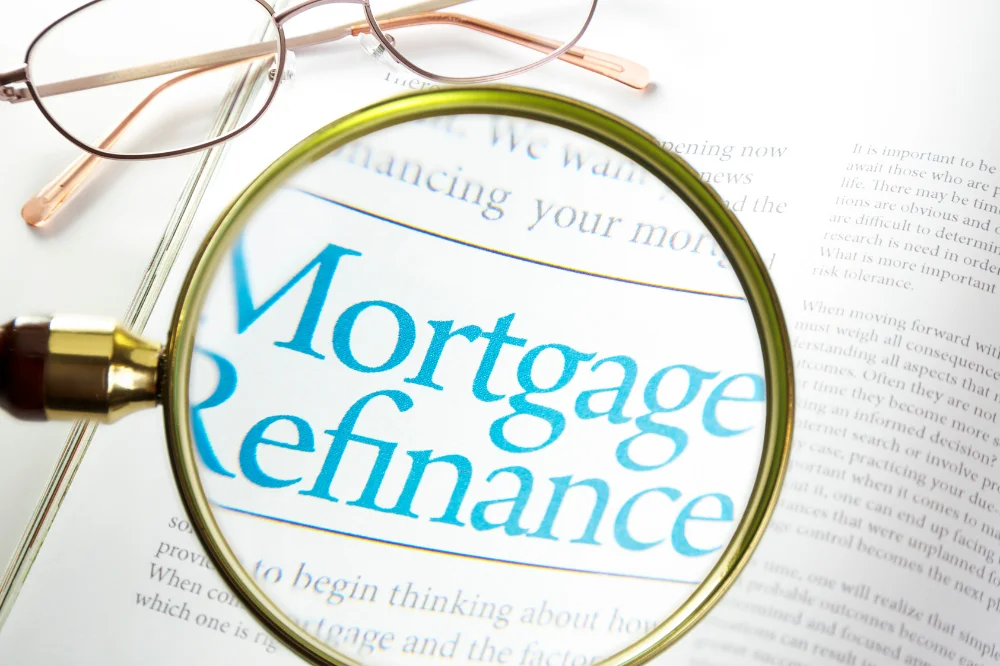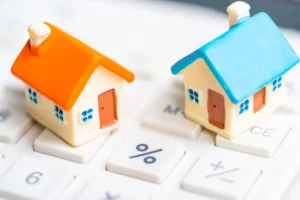Mortgage refinancing is a hot topic for many homeowners, but deciding when it’s the right time to refinance can be tricky. Some refinance to lower their monthly payments, others to reduce the loan term or switch from an adjustable-rate mortgage (ARM) to a fixed-rate one. But is refinancing your mortgage the best move for you? Let’s dive into everything you need to know to make the right decision.
What is Mortgage Refinancing?
Mortgage refinancing is the process of replacing your existing mortgage with a new one, typically with better terms. Homeowners often do this to take advantage of lower interest rates, reduce monthly payments, or tap into the equity they’ve built in their homes.
It’s important to note that refinancing is not the same as loan modification. While loan modification alters the original terms of the existing mortgage, refinancing pays off the old loan and creates a new one with different terms.
Signs It May Be Time to Refinance
Lower Interest Rates in the Market
If current mortgage rates are significantly lower than what you’re paying, refinancing could save you a lot of money. Even a small percentage difference can add up to significant savings over the life of your loan.
Improved Credit Score
Has your credit score improved since you took out your mortgage? A better credit score may qualify you for a lower interest rate, which can save you thousands in interest.
Need for Lower Monthly Payments
If you need to reduce your monthly expenses, refinancing can help lower your mortgage payments by extending the loan term or securing a lower interest rate.
Desire to Shorten Loan Term
Some homeowners refinance to shorten their loan term. This allows them to pay off their mortgage faster and reduce the overall interest they pay.
Types of Mortgage Refinancing
- Rate-and-Term Refinance
This is the most common type of refinance. It changes the interest rate, the loan term, or both, without taking cash out of the home’s equity.
- Cash-Out Refinance
A cash-out refinance allows you to replace your current mortgage with a larger one, withdrawing the difference in cash. This option is often used to fund home improvements or consolidate high-interest debt.
- Streamline Refinance
Streamline refinancing is available for government-backed loans (like FHA or VA loans). It simplifies the process, typically with fewer documentation requirements, making it faster and easier.
Benefits of Mortgage Refinancing
- Reducing Monthly Payments
If you’re struggling with your current mortgage payments or just want to free up some cash, refinancing can help lower your payments. By securing a lower interest rate or extending the loan term, you can significantly reduce your monthly obligations.
- Shortening the Loan Term
For those wanting to pay off their mortgage sooner, refinancing to a shorter term can help. You’ll likely pay less in interest over the life of the loan, but keep in mind that your monthly payments will increase.
- Accessing Home Equity
If you’ve built up significant equity in your home, a cash-out refinance allows you to access that equity for renovations, debt consolidation, or other major expenses.
- Switching from Adjustable to Fixed Rates
If you currently have an ARM and are worried about rising rates, refinancing into a fixed-rate mortgage can provide stability and peace of mind, ensuring your payments stay the same throughout the loan term.
Potential Downsides of Mortgage Refinancing
- Closing Costs and Fees
Refinancing isn’t free. There are closing costs involved, typically ranging from 2% to 6% of the loan amount. It’s important to calculate whether the long-term savings outweigh these costs.
- Extending Your Loan Term
While lowering monthly payments by extending your loan term may sound appealing, it also means you’ll be paying interest over a longer period, potentially costing more in the long run.
- Risk of Losing Equity in Cash-Out Refinancing
When you opt for a cash-out refinance, you’re borrowing against your home’s equity. If the housing market declines or you plan to sell soon, this could result in financial loss.
Steps to Take Before Mortgage Refinancing
- Assessing Your Financial Situation
Before diving into refinancing, it’s essential to take a close look at your current financial health. Review your credit score, debt-to-income ratio, and overall budget to determine if refinancing will truly benefit you in the long run. A solid financial foundation will help you qualify for better rates and terms.
- Shopping for Lenders
Not all lenders offer the same rates or terms, so it’s crucial to shop around. Compare offers from multiple lenders to find the best deal for your refinancing needs. Look beyond just the interest rate—consider the overall loan terms, customer service, and reputation of the lender.
- Understanding Loan Terms and Fees
Refinancing can come with various costs, including origination fees, appraisal fees, and closing costs. Be sure to fully understand these fees and how they impact your potential savings. Additionally, familiarize yourself with different loan terms—whether fixed-rate or adjustable-rate—and choose one that fits your financial goals.
- Consult with a Mortgage Specialist
Finally, consider consulting with a mortgage specialist. They can provide personalized advice based on your unique financial situation and help you navigate the refinancing process. A specialist can clarify complex loan terms and guide you in selecting the best option that aligns with your financial goals.
How to Choose the Right Mortgage Refinancing Option
Comparing Interest Rates and Terms
When selecting a refinancing option, it’s important to compare interest rates and loan terms offered by different lenders. A lower interest rate can significantly reduce your monthly payments and overall loan costs, but be sure to evaluate the loan term as well. A shorter term may result in higher monthly payments but save more in interest over time.
Considering Loan Flexibility
Some mortgage refinancing options offer more flexibility than others. Look for features like adjustable-rate mortgages (ARMs) that can adjust over time, or fixed-rate mortgages that provide stability. Consider whether you’d benefit from flexible payment schedules or options that allow you to make additional payments without penalties.
Weighing the Costs and Benefits
Refinancing isn’t free, so carefully weigh the upfront costs—like closing fees—against the long-term benefits. Calculate how long it will take for your savings from a lower interest rate to outweigh the costs of refinancing. This break-even point is critical in deciding if refinancing is a smart financial move for you.
When Mortgage Refinancing May Not Be the Right Choice
Market Conditions Not Favorable
Mortgage Refinancing during periods of high interest rates can result in little to no savings, or even higher payments. If the current market conditions aren’t offering favorable rates, it may be better to wait until interest rates drop before considering refinancing.
High Closing Costs
Refinancing comes with fees, including closing costs, which can sometimes be steep. If these costs outweigh the potential savings from a lower interest rate, refinancing may not be worth it. Always calculate the total cost to ensure refinancing will save you money in the long term.
Minimal Savings from Lower Interest Rates
If the difference between your current interest rate and the new rate is small, the monthly savings may not justify the time and expense of refinancing. In such cases, sticking with your existing loan might be a better option, especially if you’re nearing the end of your mortgage term.
Common Mistakes to Avoid When Mortgage Refinancing
Not Shopping Around for the Best Rate
One of the biggest mistakes homeowners make is not exploring multiple lenders. Each lender may offer different rates and terms, and failing to compare can result in missing out on significant savings. Always obtain quotes from various lenders to ensure you’re getting the best deal possible.
Focusing Only on Interest Rates
While a low interest rate is important, it shouldn’t be the only factor in your decision. Other aspects, such as loan terms, fees, and flexibility, can have a significant impact on your overall financial situation. Be sure to evaluate the entire loan package to make an informed choice.
Overlooking Loan Terms
Many borrowers neglect to pay attention to the specifics of loan terms. The duration of the loan, whether it’s fixed or adjustable, and any penalties for early repayment can all influence your financial future. Understanding these terms is crucial for ensuring that the refinancing option aligns with your long-term goals.
Mortgage Refinancing for Different Goals
Refinancing for Lower Payments vs. Home Improvements
Mortgage Refinancing can be an effective strategy for achieving various financial goals. If your primary aim is to lower monthly payments, look for options that offer reduced interest rates or extended loan terms. This can free up cash for other expenses. On the other hand, if you plan to finance home improvements, consider a cash-out refinance. This allows you to tap into your home’s equity, providing funds to enhance your property while potentially increasing its value.
Refinancing to Consolidate Debt
Another common reason for mortgage refinancing is to consolidate debt. If you have high-interest credit card debt or personal loans, refinancing your mortgage to secure a lower interest rate can help. By consolidating these debts into your mortgage, you may lower your overall monthly payments and simplify your finances. However, be cautious, as extending your mortgage term can result in paying more interest over time. It’s essential to weigh the long-term implications before making this decision.
Conclusion
Refinancing your mortgage can be a powerful tool for achieving various financial objectives, whether it’s lowering your monthly payments, accessing home equity for improvements, or consolidating debt. However, it’s crucial to approach refinancing with careful consideration and thorough research. By assessing your financial situation, shopping for the best rates, and understanding the terms and costs involved, you can make an informed decision that aligns with your long-term goals.
FAQs
What is the Best Time to Mortgage Refinancing?
The best time to refinance is when interest rates are lower than your current rate, and when you can afford the closing costs.
How Much Does Refinancing Typically Cost?
Refinancing typically costs between 2% and 6% of the loan amount, including closing fees.
How Soon Can You Refinance After Buying a Home?
You can refinance as soon as six months after closing on your mortgage, although some lenders may require you to wait longer.
Can You Refinance with Bad Credit?
It’s possible to refinance with bad credit, but you may not get the most favorable rates.
What’s the Difference Between Cash-Out and Rate-and-Term Mortgage Refinancing?
A cash-out refinance allows you to borrow more than you owe on your home, whereas a rate-and-term refinance only changes the loan terms without withdrawing any equity.





